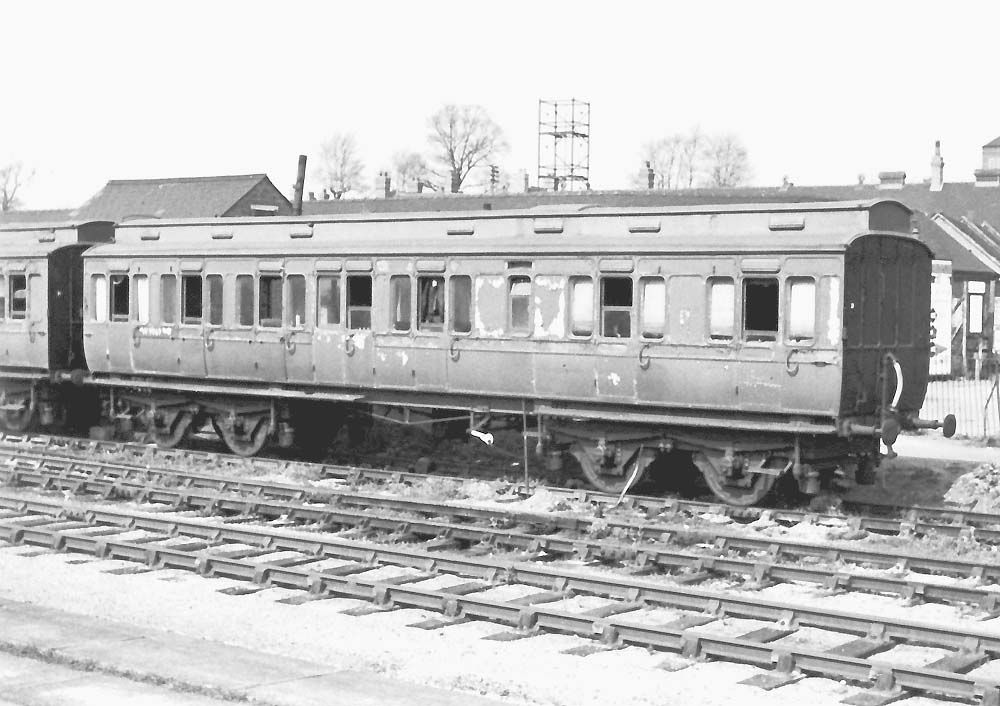 |
|
GWR Route: Banbury to Wolverhampton
Solihull Station: gwrs2626
 |
Ex-Great Western Railway Camping Coach No W9969 in the up
sidings at Solihull Station on Saturday 19th April 1952. This 46 foot, 6 inch
long clerestory composite coach was built at Swindon to diagram E17 in August
1888 as part of lot 411 and numbered No 858. The coach had three first class
compartments (two with lavatories), three second class compartments and a
central luggage area. Due to a lack of broad gauge carriage stock it was
modified to run on broad gauge bogies in March 1889 and renumbered No 578, but
three years later, in June 1892, it was restored to its original condition and
once again became No 858. In 1907 the Great Western Railway renumbered its
coaches giving each a prefix indicating the type and as a composite coach it
became No 6858. Originally provided with oil lighting, this was replaced; first
with flat flame gas burners and then incandescent gas lighting in May 1909. By
this time steam heating had also been provided and an internal reorganisation
of the lavatories resulted in a diagram change (E18). The coach was withdrawn
from revenue earning passenger traffic and officially condemned January
1935.
In April 1935, the condemned coach was converted at Swindon
into a type C (eight berth) Camp Coach and became No 9969. This was one of
fourteen new type C Camp Coaches in 1935, which included six converts from
condemned E17 coaches. All had a similar internal arrangement; one of the
lavatories was retained as a cloak room, with access from the central communal
area, adjacent to this area was the kitchen with cupboards, sink, stove and
oven, while at the coach ends were three bedrooms (one with bunkbeds). The
layout allowed all the rooms to be accessed without leaving the coach, with
external doors being provided only from the communal area and kitchen. In the
1930s the cost of hiring a type C Camp Coach was £4 per week, plus an
obligation to purchase eight rail tickets. The location of Camp Coach No 9969
in the 1935 and 1936 holiday seasons is not known, but during 1937 it was the
first Camp Coach to be located at Marazion near Penzance in Cornwall.
With the start of the Second World War, coach No 9969 was
recorded as being in military use by 15th January 1940, but on 5th April 1941
was stationed at Shiplake Station on the Henley-on-Thames branch line, where it
was placed at the disposal of Sir Charles Hambro (the Chairman of the Great
Western Railway). On 28th October 1942 the coach was sent to Swindon to be
fitted-out for the Signal & Telegraph Department and after the war the
coach was retained by the Department. The coach was known to be at Radyr in
September 1949, where the stove was renewed. The W prefix to the number was
added by British Railway and coach No W9969 was finally condemned in May
1956.
This photograph is displayed courtesy of the HMRS
(Historical Model Railway Society) and copies can be ordered directly from them
using the link HERE, quoting reference ABW609.
Robert Ferris
 back back

|
